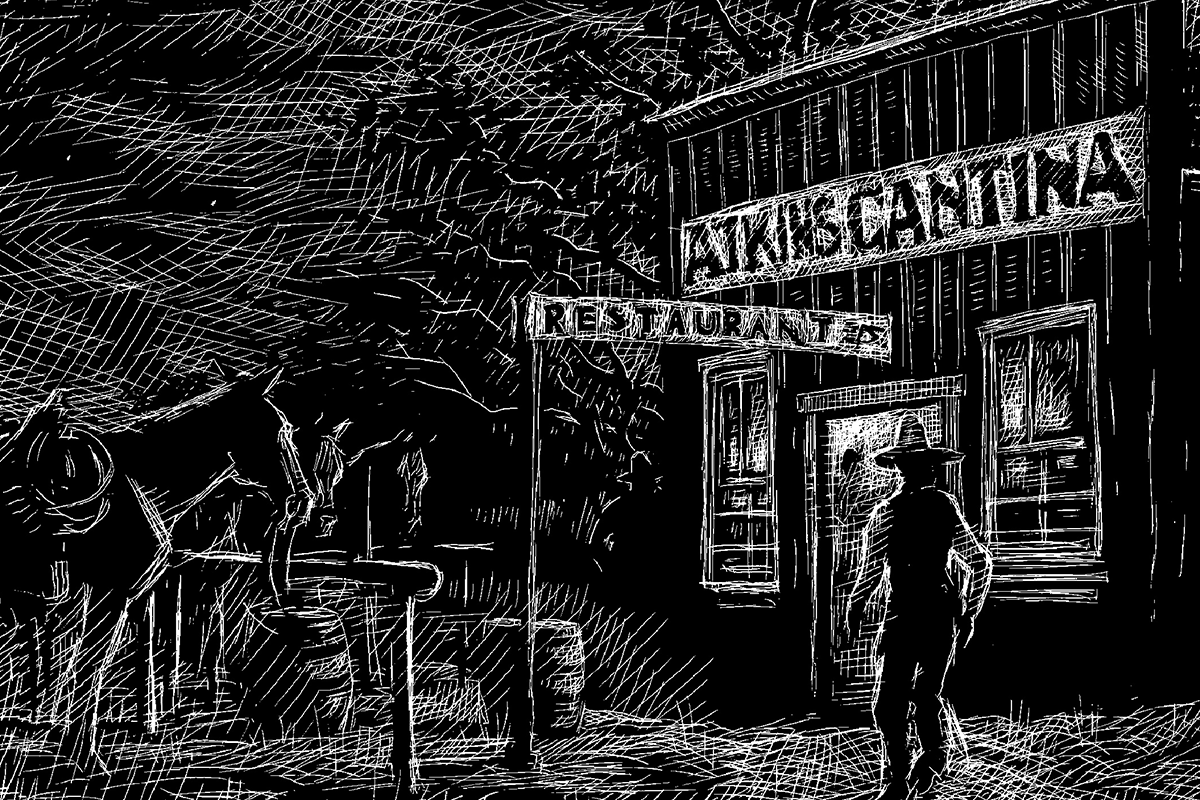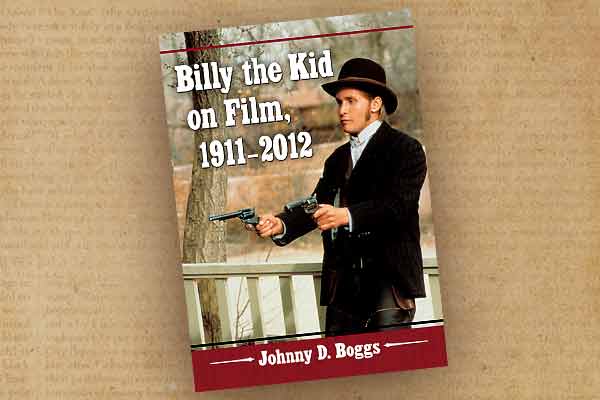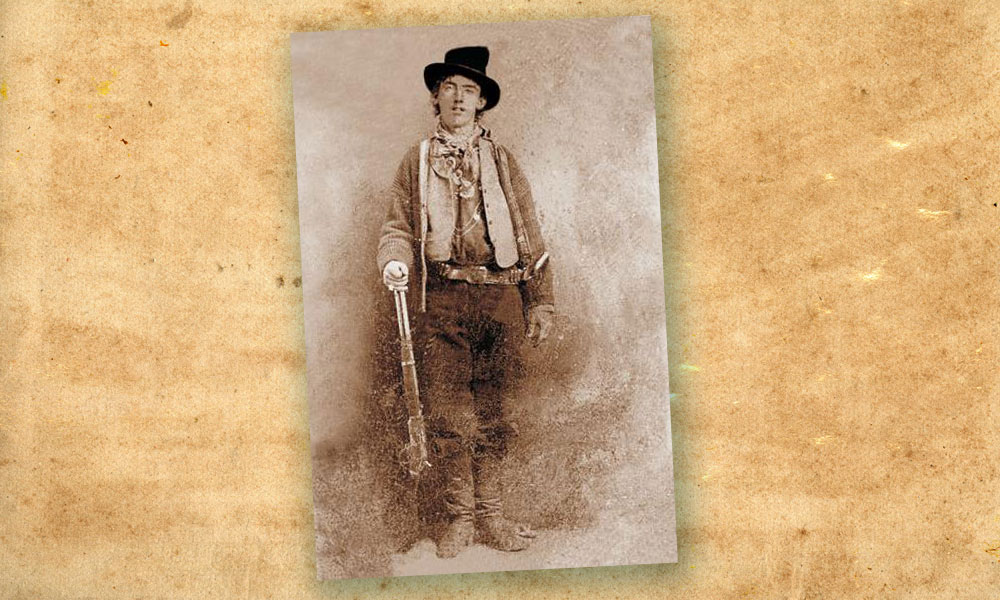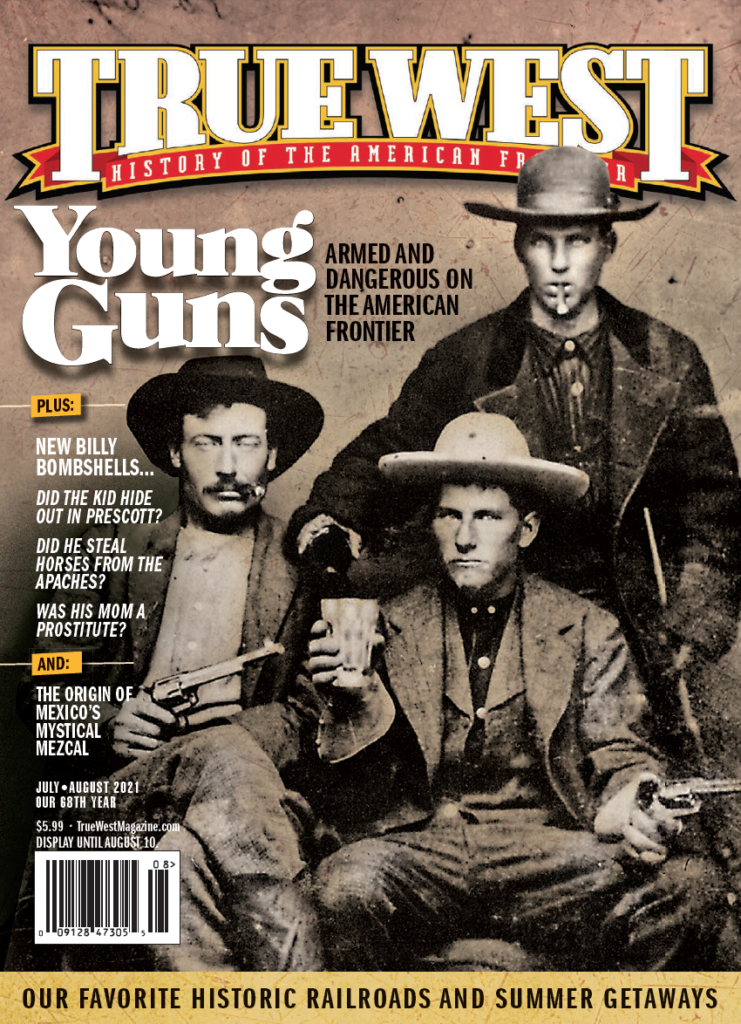By Bob Boze Bell (based on the research of Fred Nolan & Jerry Weddle)
Henry Antrim vs. Windy Cahill
“I…called him a pimp.”
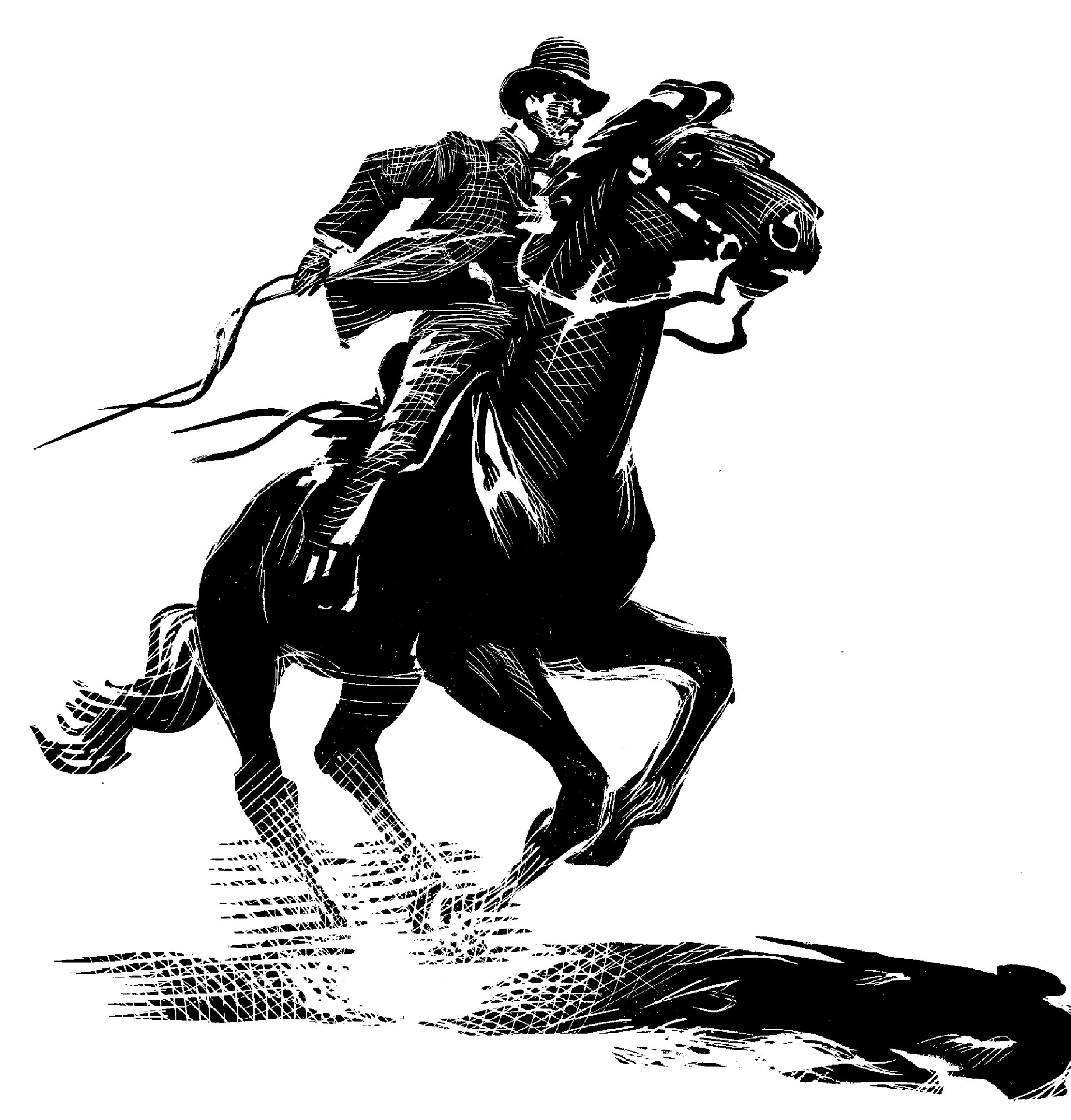
Illustrations by Bob Boze Bell
August 17, 1877
It’s a Friday night, and young Henry Antrim is playing poker in George Atkins’s Cantina, just outside the military reservation of Fort Grant, Arizona.
Antrim, whose real last name is McCarty, is a young runaway (probably 16, perhaps 17) who has been stealing saddles and horses from the soldiers at the fort. Antrim and ex-soldier John Mackie specialize in a tag team method of grabbing mounts while the troopers are preoccupied in the nearby Hog Ranch (Army slang for a brothel).
That evening, Antrim gets sideways with fort blacksmith Frank “Windy” Cahill, who calls the slight youth a “pimp.” Antrim calls the big Irishman a “son of a bitch.”
The two begin to tussle. The older man throws the boy to the floor several times, finally pinning Antrim’s arms down with his knees and slapping the boy’s face.
In spite of being pinned to the ground, the boy manages to retrieve his pistol from the waist of his pants. Bystanders report a “deafening roar” as the boy fires point blank into the blacksmith’s belly. Cahill slumps to the side.
The boy squirms free and runs outside where he grabs the fastest horse—Cashaw—that belongs to John Murphy. The newly minted mankiller, who would later gain notoriety as Billy the Kid, spurs the mount eastward toward New Mexico.
The Equalizer

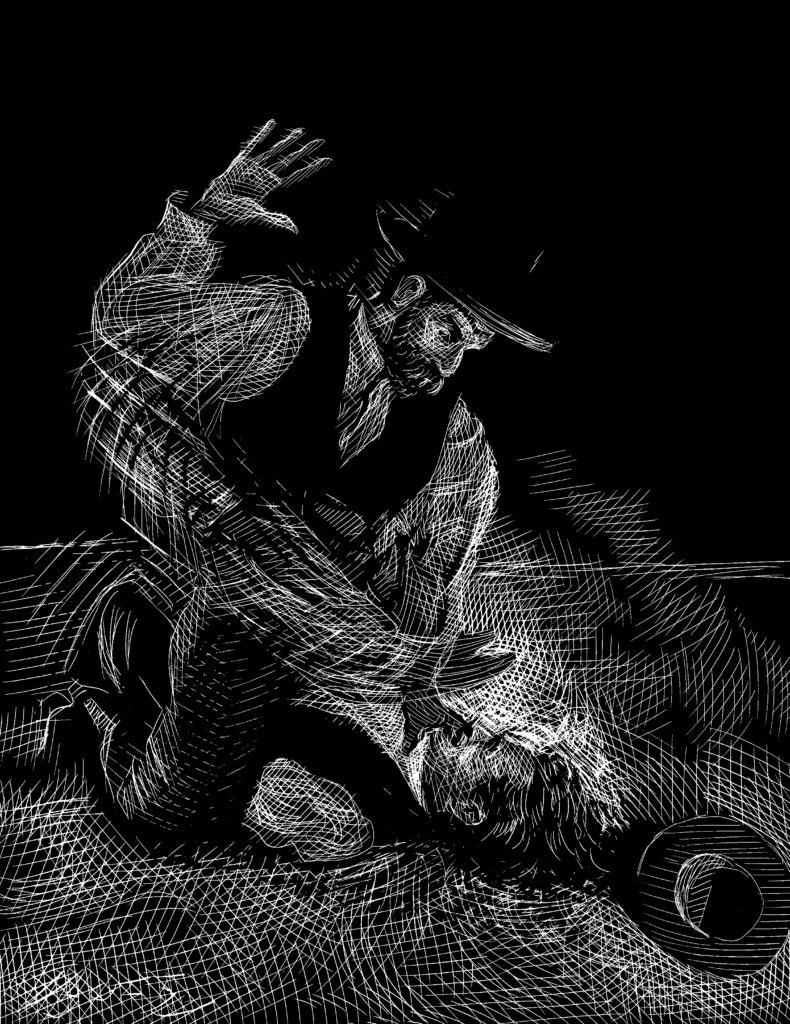
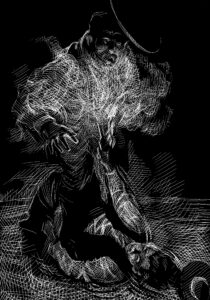
Windy Cahill knocks down the Kid several times. Then he jumps on the Kid, pinning his arms with his knees, but Henry still manages to retrieve his pistol.
Dying Words
The dying words of the blacksmith are printed in the Arizona Weekly Star on August 23: “I, Frank Cahill, being convinced that I am about to die, do make the following as my final statement. My name is Frank P. Cahill. I was born in the county and town of Galway, Ireland; yesterday, Aug. 17th, 1877, I had some trouble with Henry Antrem [sic], otherwise known as Kid, during which he shot me. I had called him a pimp and he called me a son of a bitch; we then took hold of each other; I did not hit him, I think; saw him go for his pistol and tried to get hold of it, but could not and he shot me in the belly; I have a sister named Margaret Flannigan living at East Cambridge, Mass., and another named Kate Conden, living in San Francisco.”
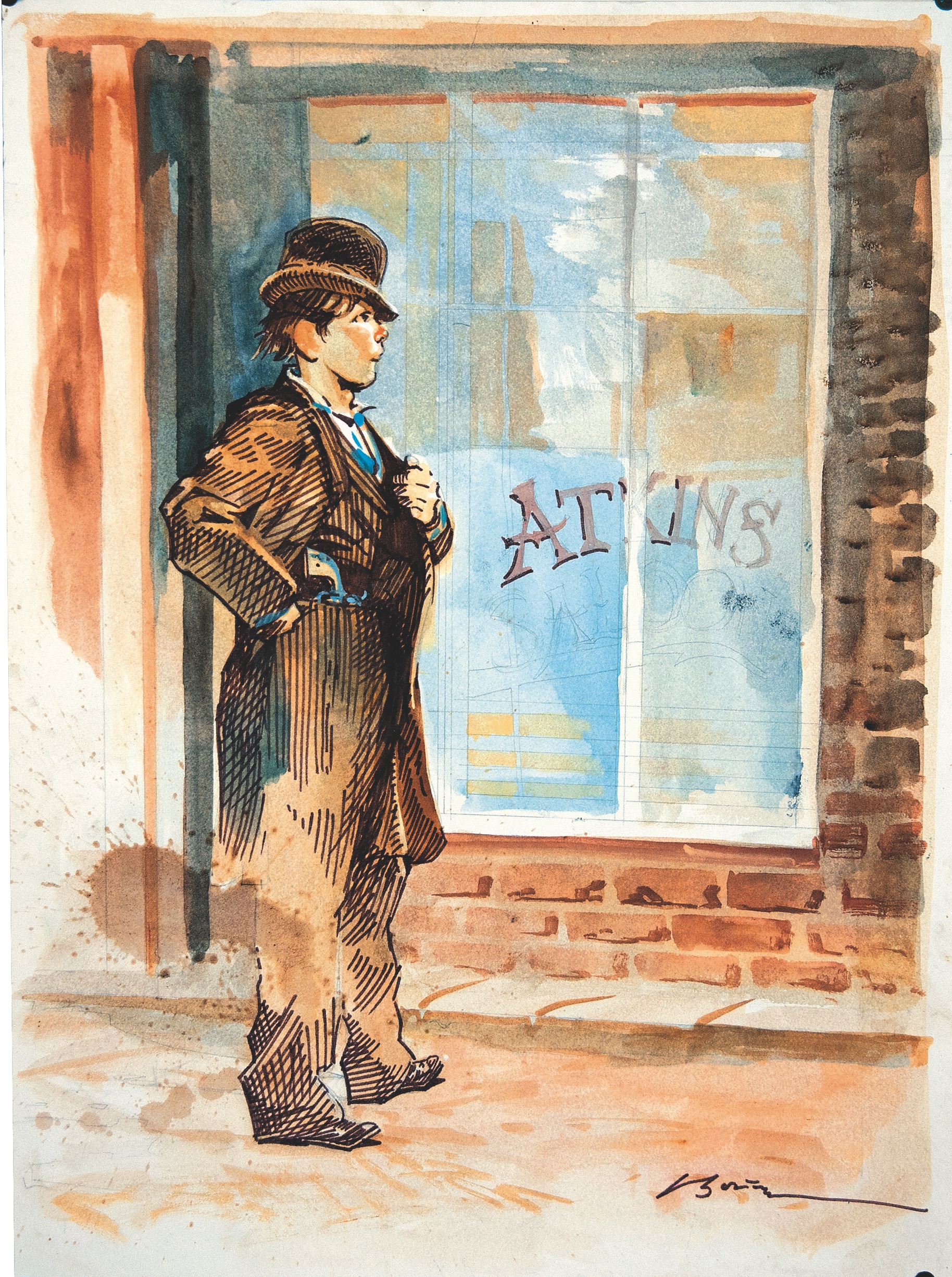
Aftermath Odds & Ends
The gutshot Frank Cahill was taken to nearby Fort Grant, where Assistant Surgeon Fred Crayton Ainsworth did what he could to save him. By the following day, the surgeon could see Windy would not survive his wound. Notary Public Miles Wood (who earlier had arrested Henry Antrim and marched him to Fort Grant before he escaped) was summoned to the fort. He took Cahill’s deathbed statement (at left). Cahill died in agony and was buried in the post cemetery on Sunday, August 19, 1877.
Miles Wood, in addition to being the notary public, was also the justice of the peace. He arranged a coroner’s inquest, summoning as jurors six locals: Milton McDowell, George Teague, T. McCleary, B.E. Norton, James L. Hunt and D.H. Smith. They quickly came to a verdict that the shooting of Cahill had been “criminal and unjustifiable, and that Henry Antrim alias kid is guilty thereof.”
Kid Antrim fled back to the Silver City, New Mexico, area, where he joined up with a roving band of outlaws led by the notorious John Kinney. The group traveled eastward, landing in Mesilla. After a possible stint in jail near there, the Boys traveled to Lincoln, where young Henry became involved in the Lincoln County War. At some point he changed his name to an alias, William Bonney. In the last year of his life, 1880-1881, he became known as Billy the Kid.
A recent addition to this Kid episode has been provided by researcher James Townsend, who found a newspaper account of F.P. “Windy” Cahill being arrested for knifing a “colored servant” of an Army officer in Tucson, prior to his altercation with the Kid, which provides some context and dispels sympathy some have had for Cahill being a victim in the Kid shooting. (See page 32 for the full account.)
Recommended: The West of Billy the Kid by Frederick Nolan, published by University of Oklahoma Press. Antrim is My Stepfather’s Name by Jerry Weddle, published by Arizona Historical Society.

